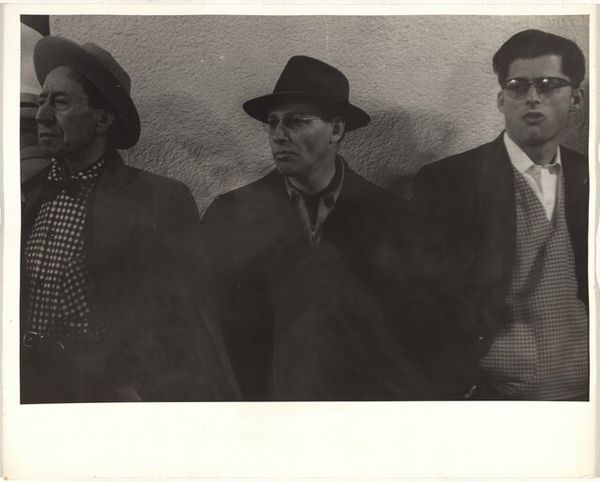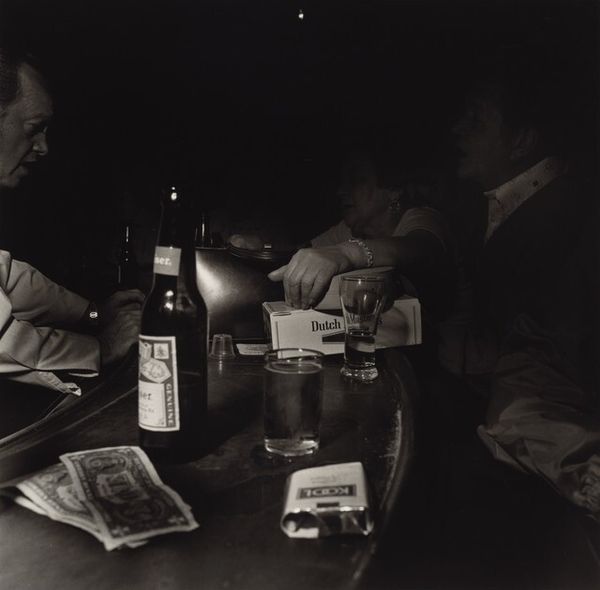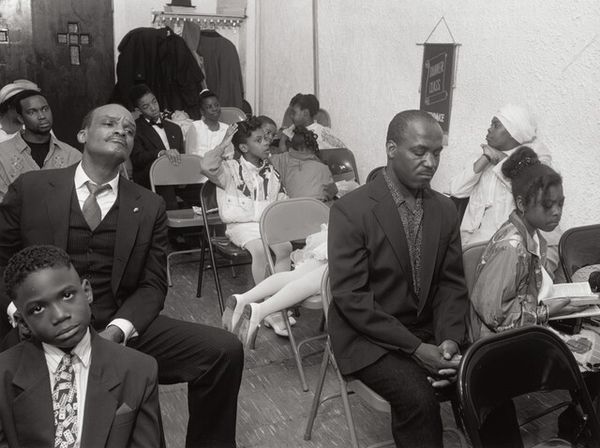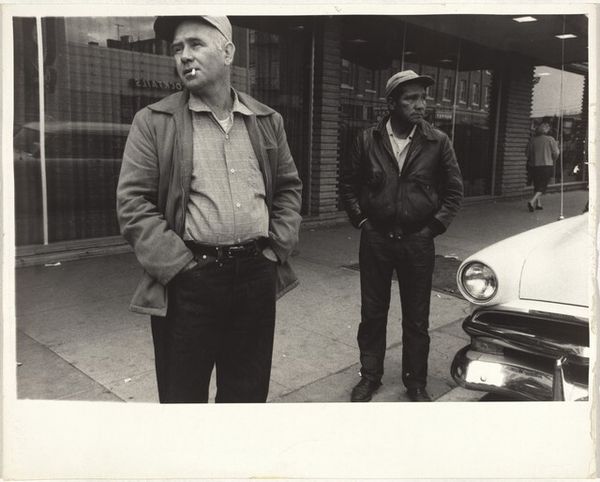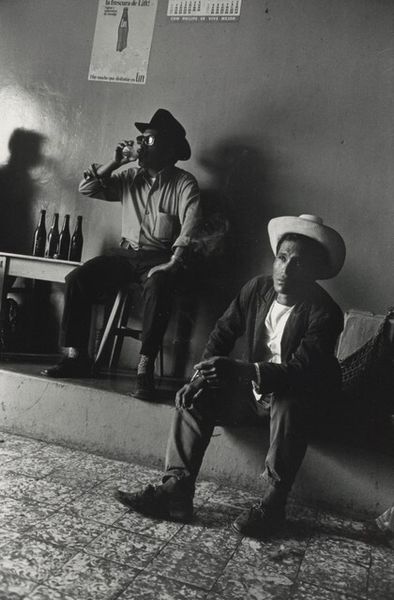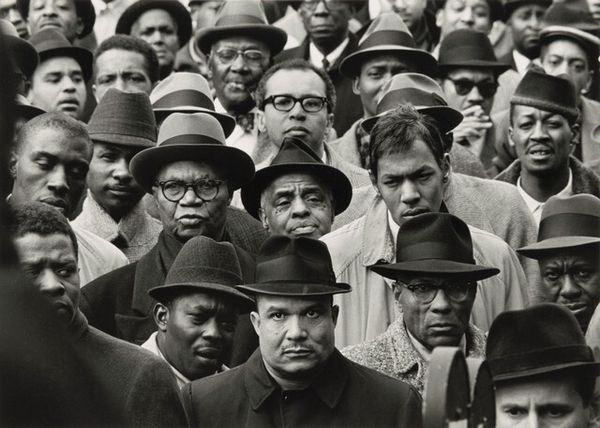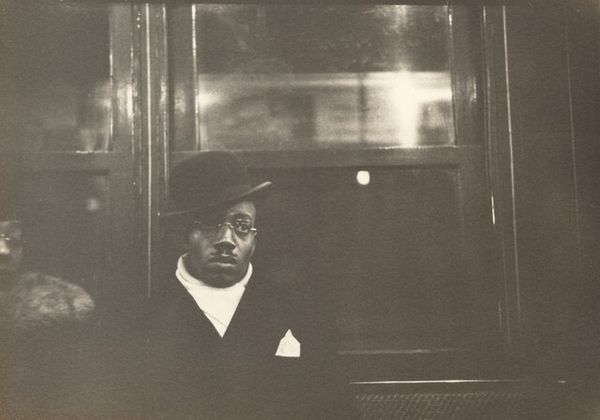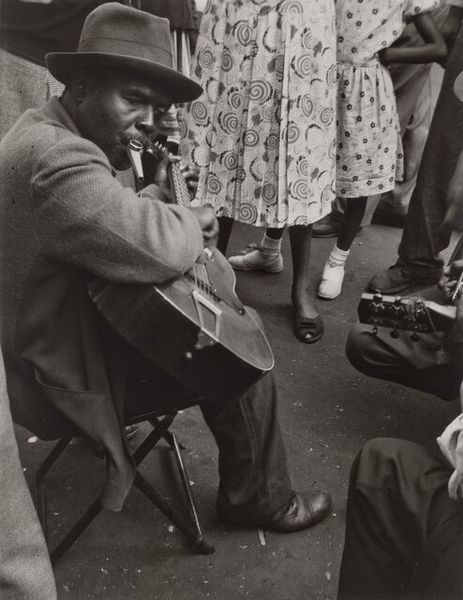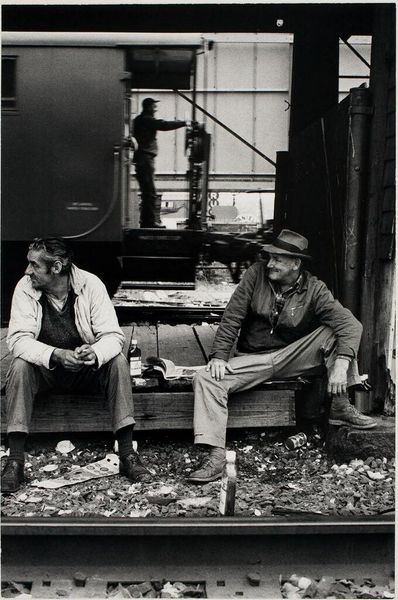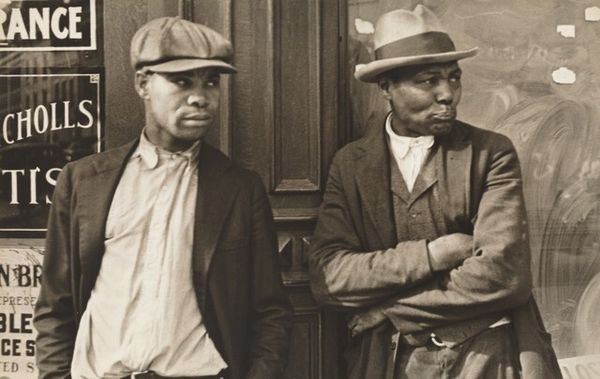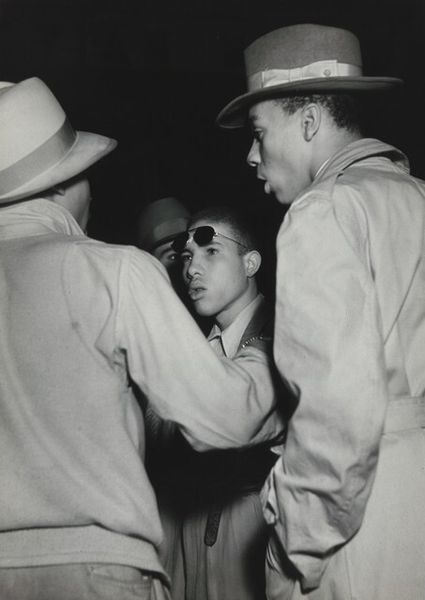
photography, gelatin-silver-print
#
portrait
#
black and white photography
#
street-photography
#
photography
#
black and white
#
gelatin-silver-print
#
monochrome photography
#
genre-painting
#
monochrome
#
realism
#
monochrome
Copyright: Robert Doisneau,Fair Use
Curator: Looking at this black and white gelatin silver print from 1952, "Coco" by Robert Doisneau, I'm immediately drawn to its intimate, almost cinematic feel. Editor: It feels staged, yet brutally honest, as though we are glimpsing into a forgotten social reality. The image seems loaded with historical connotations about working-class masculinities in postwar Paris, don’t you think? Curator: Indeed. The man in the bowler hat, "Coco" himself, presents a figure that evokes a Charlie Chaplin-esque melancholic archetype. The bowler is more than headwear; it's a potent emblem associated with comic resilience in the face of societal shifts. The hat is almost mocking his position but somehow holding it proudly. Editor: Absolutely. Chaplin used that imagery to create a cultural persona; here, the photographic approach, caught within a bar scene with a pensive figure in the background, seems to suggest the individual as part of a social landscape shaped by economic conditions and working life, all shadowed in a monochromatic palette. I notice the distinct arrangement of glasses on the bar surface. They seem like the focal point. Curator: The stemware indeed creates an ordered still life across the pub scene and yet, despite their delicate nature, the drinking glasses don’t take away from the central motif. They could symbolize fragility amid a robust male setting but could symbolize other attributes. There seems to be an odd man looking up to the sky behind, holding a cigarette. Editor: The smoking man seems like a symbol of existential pondering and the social setting and gender roles become so obviously coded. It’s not just about drinking but it is so deeply ingrained in societal roles for a post war society in France that one sees. The photographic choice here reinforces not just the symbolism but also a very acute sense of social place and time. Curator: Agreed, and by extension, our current historical lens cannot look away from how even unassuming pub settings can reveal hidden narratives from gender norms to even national memory. Editor: Precisely. It is interesting to think about the dialogue on cultural identity, personal resilience, class, and historical forces as they meet, or rather intersect. It provokes meaningful discussion on what it used to mean to gather within a working class and the symbolic objects which can hold multiple meanings, when analyzed through social, cultural, and symbolic paradigms.
Comments
No comments
Be the first to comment and join the conversation on the ultimate creative platform.
